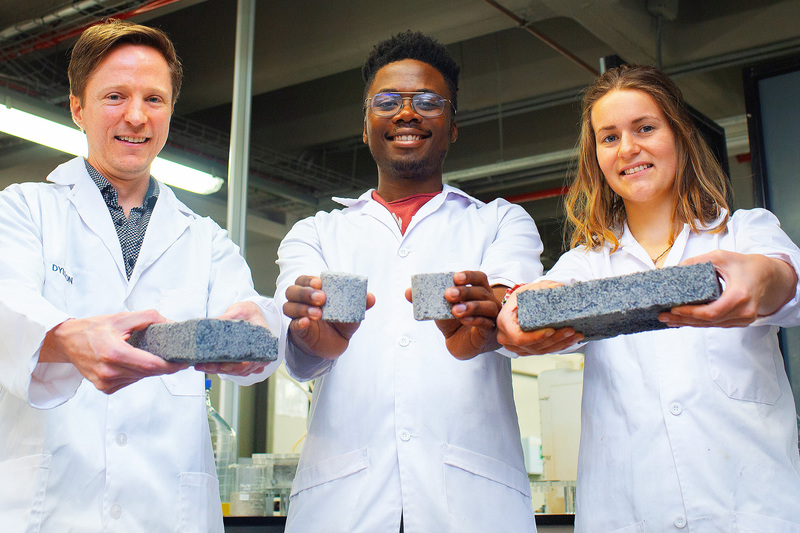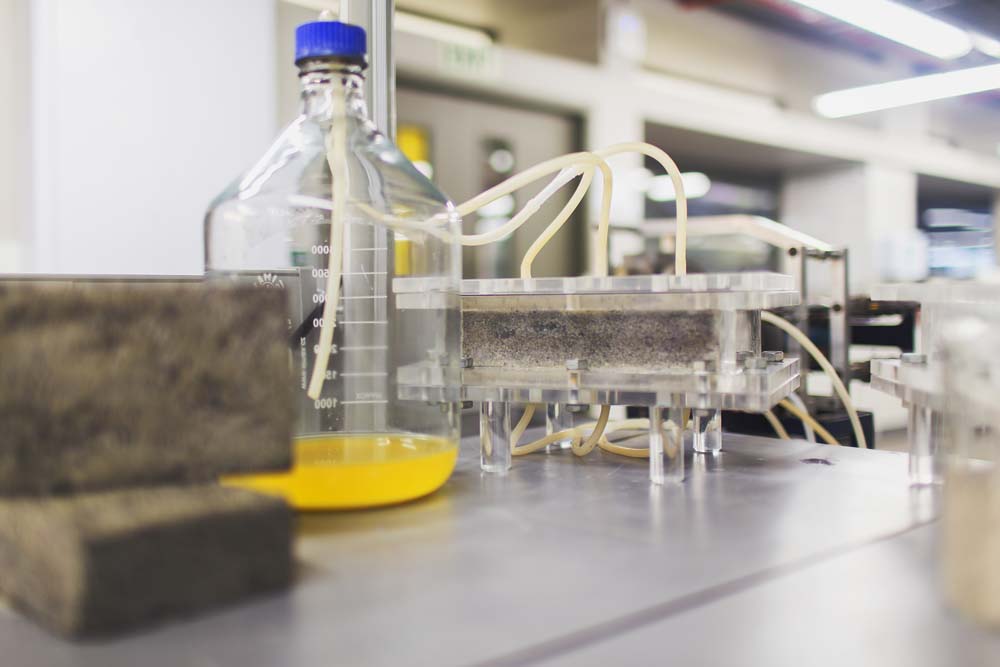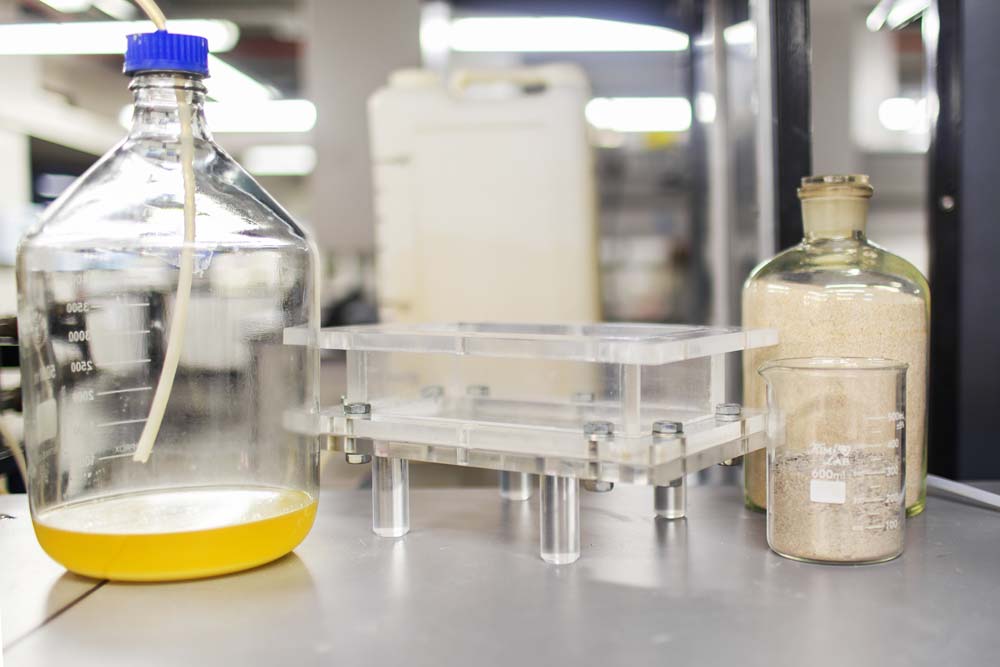Bricks have long been used as building materials for building houses. Of course, we still use bricks all over the world. But if this new brick is used, the history of the brick may change. A team of South African students succeeded in making this brick at high temperature using human urine and making it at room temperature.

Suzanne Lambert and Vukheta Mukhari, who are undergoing a master’s degree in Civil Engineering at Cape Town University. They have been studying how to make bricks over the course of a few months and have succeeded in making bricks named bio-bricks using human urine.
The material of the bio-brick, Morre, is a bacterium that makes an enzyme called urease (urease). Urease breaks down the elements contained in urine to produce calcium carbonate and clumps the bricks. The process of making bio-bricks is similar to that of shells. Urease can cause the calcium carbonate produced in human urine to solidify in the shape of a sand, as well as a rectangle like a regular brick, but also a cylinder.


The idea of chopping bricks with elements was similar in the United States a few years ago. This time, however, based on the basic research in Switzerland in 2017, it actually succeeded in building bricks using real human urine. Typically, bricks emit a large amount of carbon dioxide during the process of extracting about 1,400 degrees of heat from the kiln. However, bio-bricks are made through molds placed at room temperature. In general, it can help not only to recycle urine, but also to reduce greenhouse gas emissions, which are the cause of global warming. Over time, bacteria grow, and brick strength is also strengthened. It means that bricks can be made stronger over time.
That’s not all. In the process of making bio-bricks, nitrogen and potassium, which are important components in commercial fertilizer, are produced as a by-product. It is the process of solidifying and removing the fertilizer component from the urine to get rid of the remaining liquid into the brick-making process. It is also expected that the remaining liquid can be fertilizer after hardening the bricks.
From a chemical point of view, human urine is said to be full of abundant resources called liquid gold. Urine accounts for less than 1% of home wastewater, but accounts for 80% of the nitrogen in the wastewater, 63% of potassium, and 56% of the population. As much as 97% of the elements contained in urine are converted to calcium phosphate, which is used as a fertilizer, phosphate can be an important source of depletion worldwide.
Of course, the way to make bricks using urine is that homework remains in terms of how to collect urine and transportation. The research team is making biobricks using only male urine because they are socially recognized (possible). However, if we are in a state of social awareness now, we can not use women’s urine, which accounts for half of the population. Therefore, even for the ideal of bio-brick to reduce social wastes as much as possible, it seems that many problems should be solved in practical use of bio-bricks in the future.
On the other hand, it is possible to think about improving the functionality of bricks through 3D printers even if it is not biotechnology integration. An example is a special brick, Cool Brick, made with a 3D printer.
Bricks have long been used by humankind to build homes, but in fact, in areas like desert, brick has been using special windows that create cold winds by evaporative cooling that takes up ambient heat when the liquid evaporates until the cooling system appears. Cool Brick is a special brick that allows indoor air to be used in cold weather by using vaporized cooling.
Evaporative cooling is one of the natural phenomena in which the temperature of air drops as water vapor is contained in the air. Evaporative cooling has been used for 1,000 years until refrigeration or refrigeration technology was invented. A typical example is a lattice called mashrabīya, which is used in Arab houses located in the desert area. Emerging Objects (EMERGING OBJECTS), which develops architectural materials using 3D printers, is a cool brick developed by Mashravia with materials that have enhanced cooling efficiency of the affected vaporization cooling system. Cool brick is a porous ceramic brick that can absorb water like a sponge while allowing air to pass through it. When the air passes through the cool brick, the water inside it blows through the fine grooves and enters the room. In this process, cooling down by vaporization cooling and becoming cool wind.
The cool brick is naturally connectable between blocks, and the irregularities on the surface are like puzzles, so that the material can be adhered firmly. Thanks to the uneven special shape, it has a shading effect and it can prevent material deterioration due to strong sunlight as well as surface temperature drop. Theoretically, if you have a dry climate you do not need a window or a mold. For more information, please click here .

